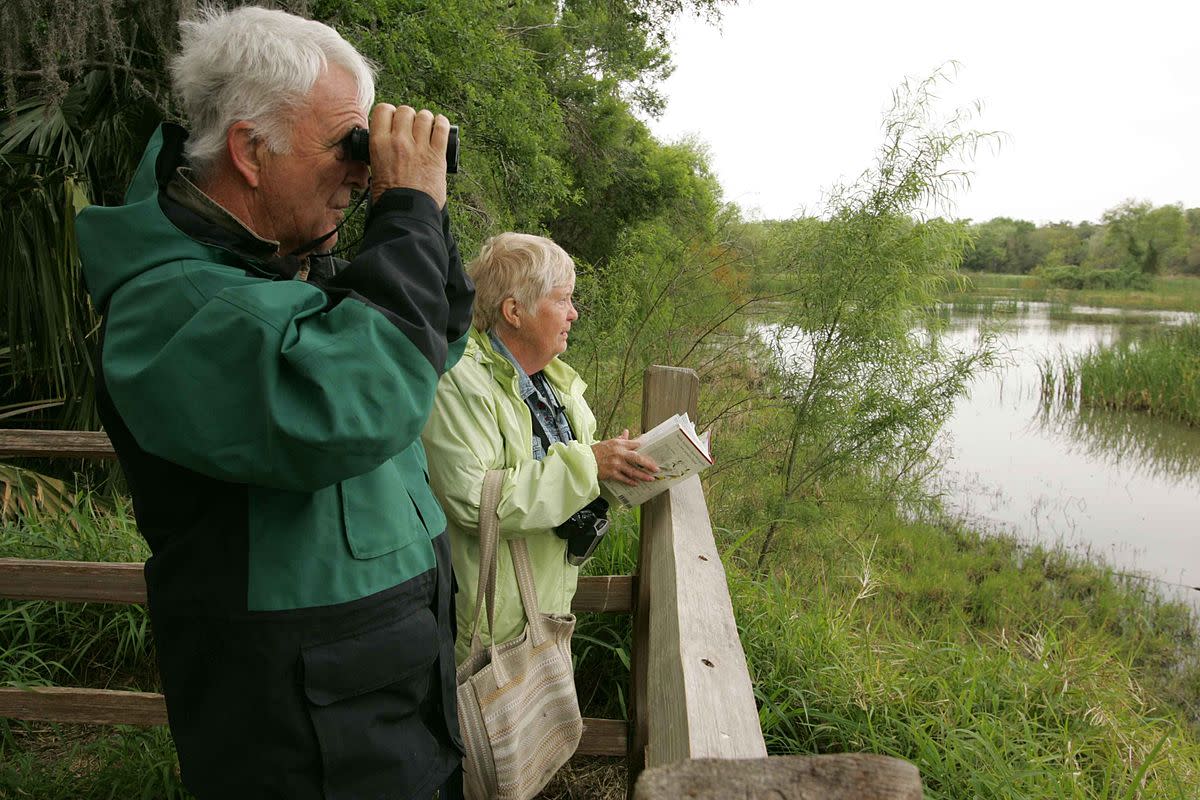Learn to Surf – How to Stand Up on a Surfboard
The first thing you need to do to prepare yourself to stand up on a surfboard is to determine which foot will be your back foot. This will be the foot that you attach your surfboard leash. Every time you try to stand up you will want to get up with the same foot to the rear of your surfboard. This is part of your surf stance. Most people surf with their right foot back, this is know as regular or normal stance. People who surf with their left foot at the rear of the surfboard are knows as goofy foots. It is not derogatory, it's just another surf term that evolved over the years. I am a goofy foot surfer.
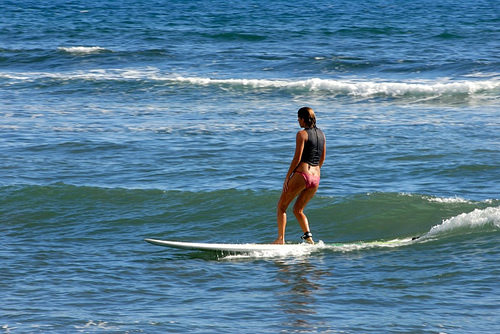
How to determine whether you are a regular or goofy foot surfer
Here are a couple of things you can do to figure out which foot you are more likely to feel most comfortable having as your back foot.
First, Stand with your feet quite close together. Have someone else push you from behind. The foot that goes forward is the foot that you would have as your front foot. If your left foot went forwards after being pushed this would mean that you surf with your right foot back and are a regular stance surfer.
Second, if you're still not sure, you can walk down a flight of stairs. Which was the foot that you put on the first step down. This is the foot that you would put forward on your surfboard. How To Surf.
Note: The surfer in this photo has her right rear foot at the back of the surfboard. She has a regular surf stance. This is a surf break in Lahaina, Maui, a great place for new surfers to learn to surf.
Standing Up on a Surfboard
Okay, this is the hard part. Before you go out into the water for the first time, it is best to practice this several times on the beach. Getting to your feet on your surfboard is known as the pop-up. Out in the water you will begin the pop up when you feel your surfboard begin to accelerate with the wave. When you feel the surfboard begin its glide or acceleration, take two more good hard paddles. Now put your hands on the rails (sides) of your surfboard just a little below your chest. Then push up hard, arching your back. Then you want to quickly swing your feet in one motion to a crouched position with your feet perpendicular to the surfboard. Don't be tentative when you do this, do it in one fluid motion and get right to your feet, don't be putting your knee's down first and then getting to your feet.
It is important to get a good wide stance on your surfboard. If your feet are only a little more than shoulder width apart, you won't have good balance on your surfboard.
Lesson on how to stand up on a surfboard
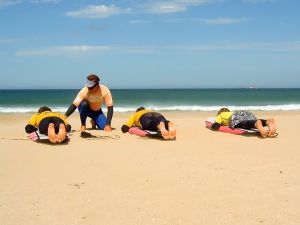
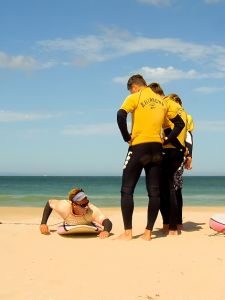
Choosing a Good Location to Learn
When you are learning to surf for the first time, it is best to practice at a beach well known as a beginner's beach. There are places like Lahaina in Maui where the waves coming in to shore break so slowly that you can learn to surf on a slow breaking wave. However, many surf beaches around the world don't offer these nice gentle breaks, or they can sometimes be so crowded that it is intimidating to the first time surfer. It is possible to learn to surf at beaches that have larger breaking waves. What you need to do when learning at a beach with larger or faster breaking waves, is to surf “inside”.
Lesson in standing up and catching a wave
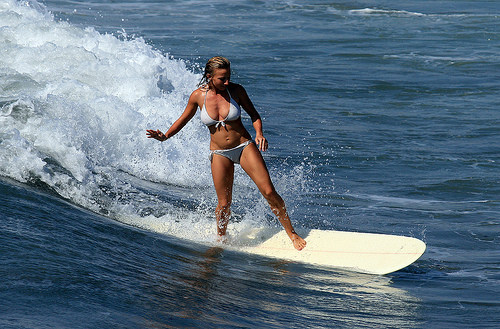
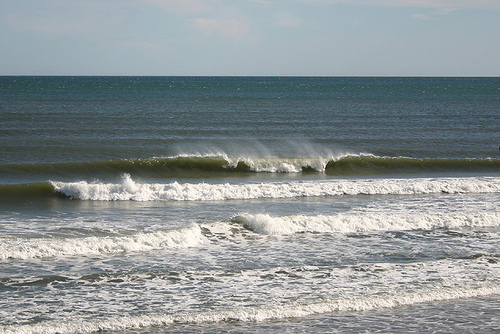
What does it mean to surf inside?
Imagine looking out to sea from the shore. You will see that the waves tend to break a certain distance from shore. This is caused by the waves reaching the shallower water as they approach shore. The height of the waves will determine where they will break. The area outside of where the waves are breaking is known in surf terms simply as “outside”. I imagine you have already guessed what “inside” means, it's the area towards shore where the waves have already broken.
The area to be is safely inside. You don't want to be too close to where the waves are breaking because sometimes a sneaky wave will come in and break right on top of you. You want to be in the area where there is good push from the whitewater and still have enough distance from shore to be able to ride the surfboard without riding right up onto the shore. By the way, surfboards don't like being ridden right onto the shore. It's a sure way to break a fin or get a ding in the surfboard.
Welcome to the Club
Practicing in the whitewater is a great way to get comfortable with the pop up. Keep practicing in this inside area until it starts to feel boring. Now you're ready to start riding the face of waves on the outside. Once you do, I guarantee you will be hooked. Now your part of the club.
More From This Author
- Cheap Airline Tickets To El Salvador | Flights To Sa...
- Cheap Flights From Austin Texas To San Jose Costa Ri...
- Learn to Surf Can I Paddle Faster on a Shortboar...
- Surfboard Storage Racks
Review of wall mounted surfboard racks and vertical surfboard racks. - How to Fly Cheap From Vancouver to Costa Rica
- Costa Rica 5 Hidden Treasures Off The Tourist Trail
- Vermicomposting Worm Composting 101 Home Com...
- Family Adventure Travel Granada Nicaragua
- Sustainable Agriculture Biodynamics - An Introdu...


